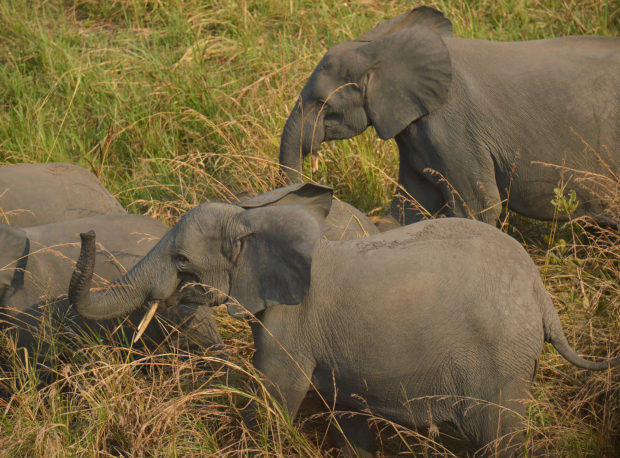CITES: Elephant poaching in Africa falls, ivory seizures up

An elephant family at the Garamba National Park in north-eastern Democratic Republic of Congo (DRC) where in the past three years alone, over 100,000 African elephants have been killed for their tusks. African Parks, a non-profit organization now in charge of Garamba National Park’s rehabilitation, has taken a number of measures, including doubling patrol efforts and increasing aerial surveillance in a bid to stem poacher incursions from as far as Chad into Africa’s oldest national park. (AFP FILE PHOTO – February 7, 2016)
The Convention on International Trade in Endangered Species of Wild Fauna and Flora (CITES) has reported on Tuesday a decline in elephant poaching in Africa for a fifth straight year in 2016 but has noted a “conflicting phenomena” as seizures of illegal ivory hit records highs.
In its latest report, CITES also pointed out that despite the overall fall in poaching, Africa’s elephant population has continued to drop “due to continued illegal killing, land transformation and rapid human expansion.”
CITES said that global illegal ivory trade has remained relatively stable for six years.
In 2016, a full 40 tons of ivory were confiscated – the most since 1989 and the highest-ever number of “large-scale ivory seizures”.
“The overall weight of seized ivory in illegal trade is now nearly three times greater than what was observed in 2007,” CITES revealed in a statement.
CITES secretary general John Scanlon believed that the drop in elephant poaching and rise in ivory smuggling could be a result of increasing vigilance among border guards and “scaled up enforcement”.
Scanlon further surmised that the prospect of tougher enforcement along with the widening trend of countries moving to ban ivory may have had a ripple effect across the black market.
“International syndicates behind this poaching and smuggling may be involved in a panic sell-off as they realize that speculating on extinction was a bad bet, with the an ever-increasing risk of getting caught,” Scanlon said.
According to the CITES, multiple studies from civil society groups have reported a 50 percent drop in ivory prices in recent years.
The CITES report said the outlook for elephant populations across Africa is mixed.
The International Union for Conservation of Nature (IUCN) has previously found that Africa’s elephant numbers fell by 111,000 between 2006 and 2015.
But CITES said the elephant population in southern Africa and much of East Africa is now either stable or increasing.
According to CITES, Botswana has the most number of elephants while populations in Kenya, Namibia, Rwanda, South Africa, and Uganda were holding steady or climbing.
Nevertheless, CITES noted that illegal elephant killings remain high in Central Africa –home to chronically restive countries like the Democratic Republic of the Congo and the Central African Republic, where weak conservation efforts have failed to stem poaching.
CITES is an international treaty between governments to protect endangered plants and animals. It aims to ensure that international trade in samples of wild animals and plants does not threaten their survival.
CITES came into force in 1975 and has now been joined by 183 state parties. /kga